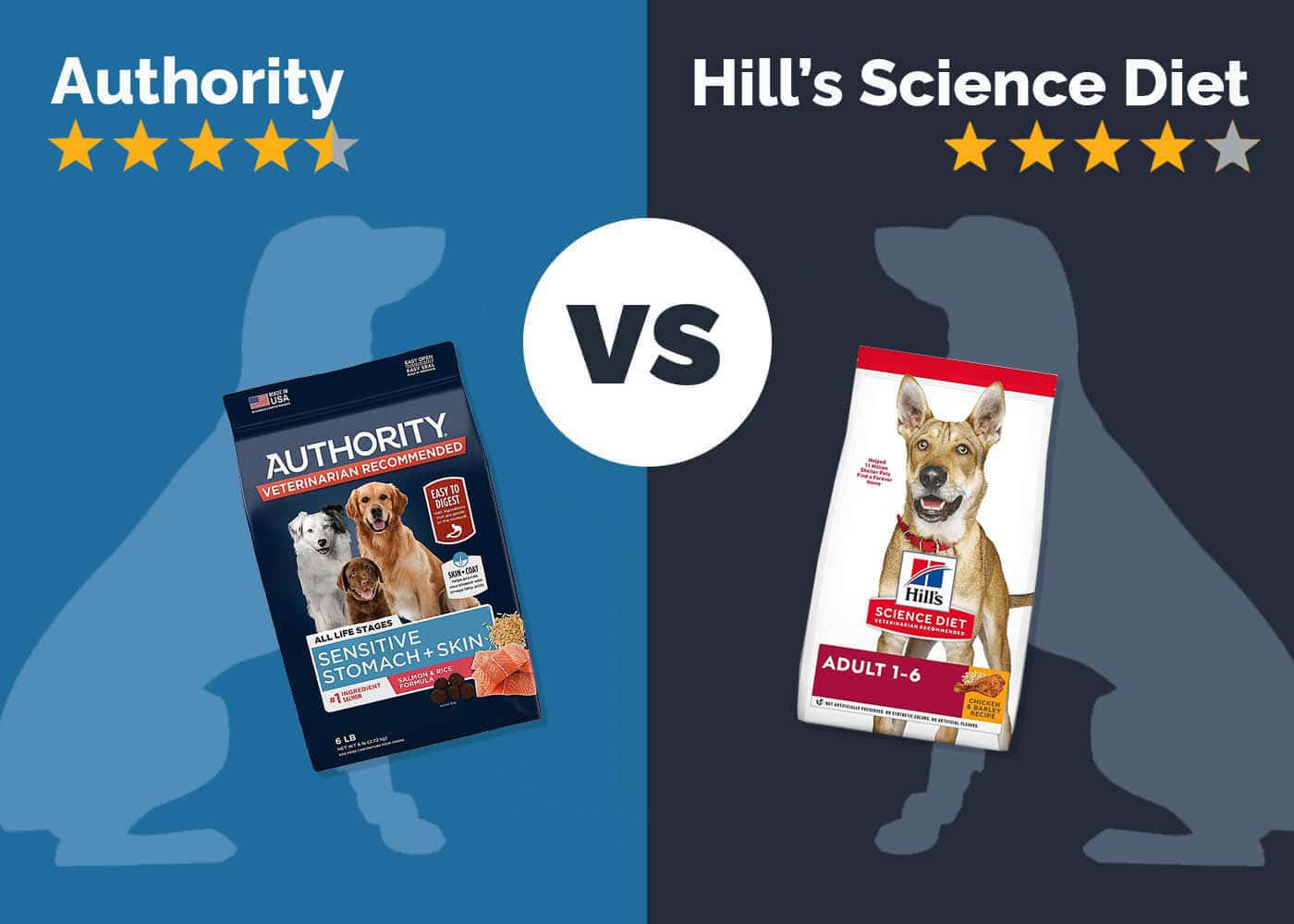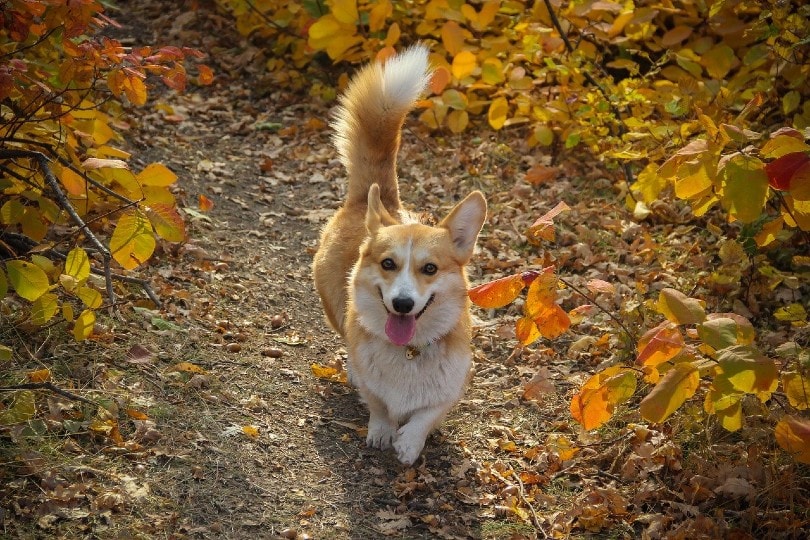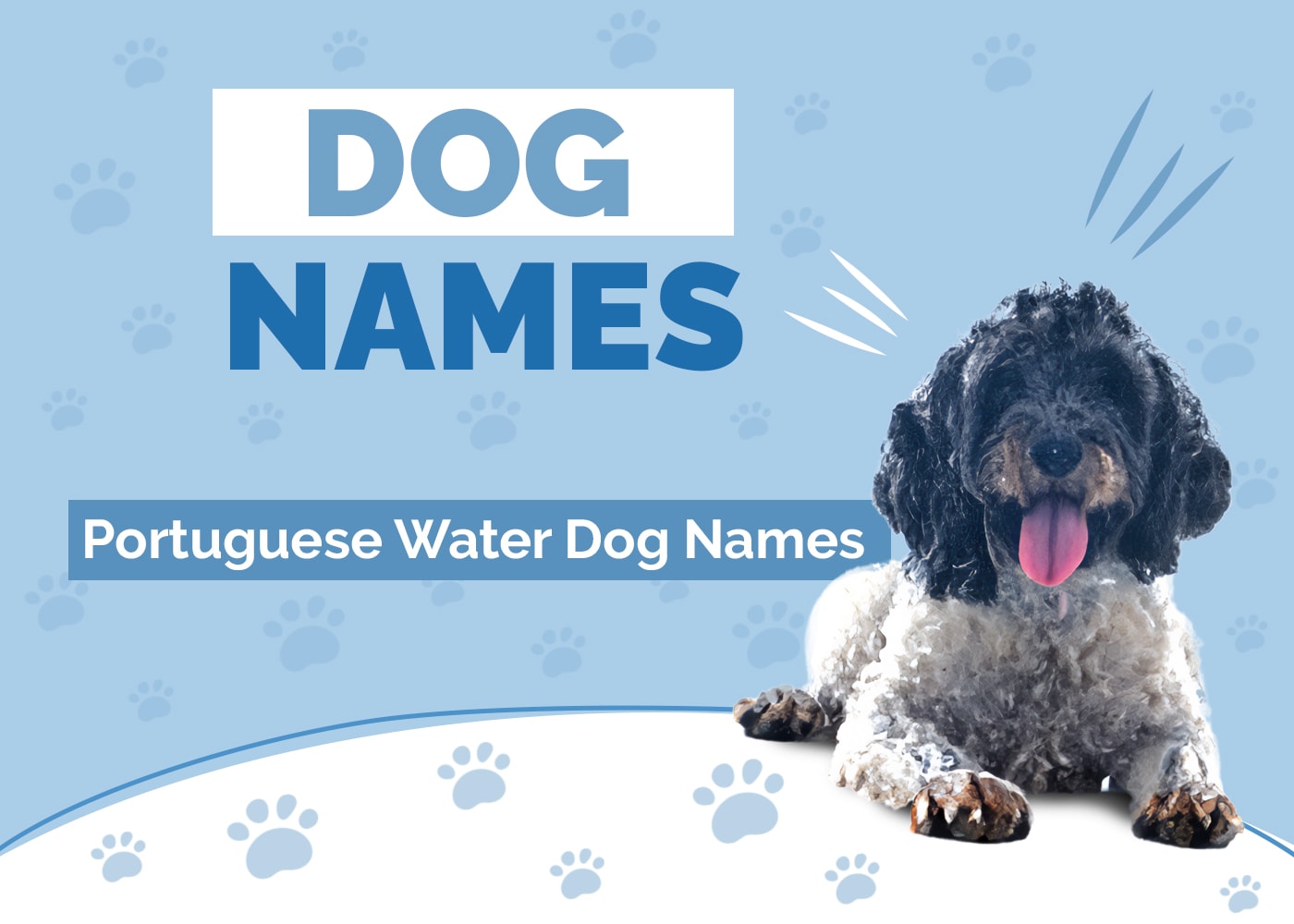Can Dogs Eat Pork Rinds? Vet-Reviewed Health Facts & FAQ

By Misty Layne
Updated on
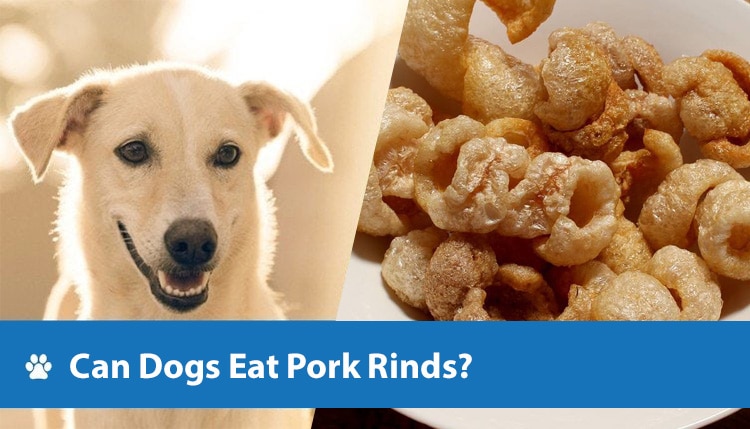
It’s always tempting to give our canine companions some of our own food, especially when they bring out the puppy dog’s eyes. But not every food we eat is safe for our pets (and some are downright toxic). So, it’s always best to check out a food before giving it to your dog to determine whether it’s safe.
Snack foods are a favorite of pups everywhere, whether it’s potato chips, cheese, or a tasty bite of a donut. And some snack foods are okay for them to have a nibble of on occasion. But what about pork rinds? Can dogs safely eat them?
The answer is no! Pork rinds are one human food that is definitely not safe for your favorite four-legged friend. But why is that? Find out below.
What Are Pork Rinds?
If you’ve never had pork rinds, they’re a snack made from pork skin (hence the name). Pork skin is boiled, and then any remaining hair is scraped away. The skin is then cut up into snackable bites and dehydrated. Then, the dehydrated pork skin is deep fried, which causes it to puff up and turn crunchy. After that, seasoning, such as salt and pepper, cinnamon and sugar, or barbecue, is added, and you finally have the finished product.
As you can likely tell from the description, pork rinds aren’t the healthiest of snacks. While they have a bit of protein, they’re also incredibly high in fat and sodium. Plus, some brands that make these snacks will also add artificial flavors and colorings to them, making them even unhealthier.
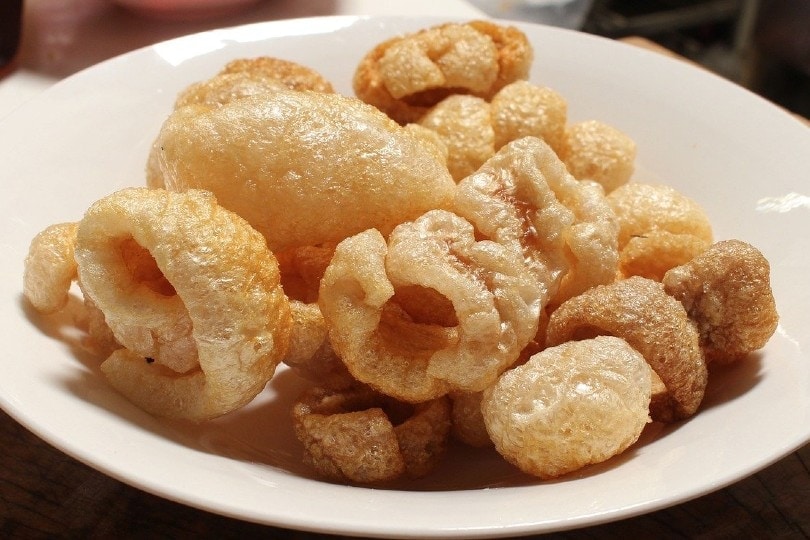
Why Pork Rinds Are Bad for Dogs
If pork rinds aren’t a healthy snack for you, they definitely aren’t healthy for your pup! The things that make this snack so unhealthy for you, like the high amount of fat and sodium, will also negatively affect your pet. Except for your pet, some of these could prove deadly.
Salt
Pork rinds have a lot of salt, so they’re full of sodium; in fact, just 2 ounces of this snack contains approximately 1,030 mg of sodium. Considering the daily recommended amount for humans is 2,300 mg or less, you can see just how much that is! Too much salt can lead to salt poisoning in our canine friends.
When a pup has too much salt in its system, its cells try to compensate by releasing water. However, the cells aren’t able to deal with losing the amount of water they’re releasing, which leads to things such as:
- Diarrhea
- Vomiting
- Difficulty walking
- Dehydration
- Tremors
- Seizures
- Kidney issues
- Death
Before you panic, salt poisoning is unlikely to happen if your dog has just snuck a bite or two of your pork rinds. But if your dog eats this food on a consistent basis or gobbles down an entire bag, it is a risk.
Too much salt in your pet’s diet can also lead to problems like high blood pressure.
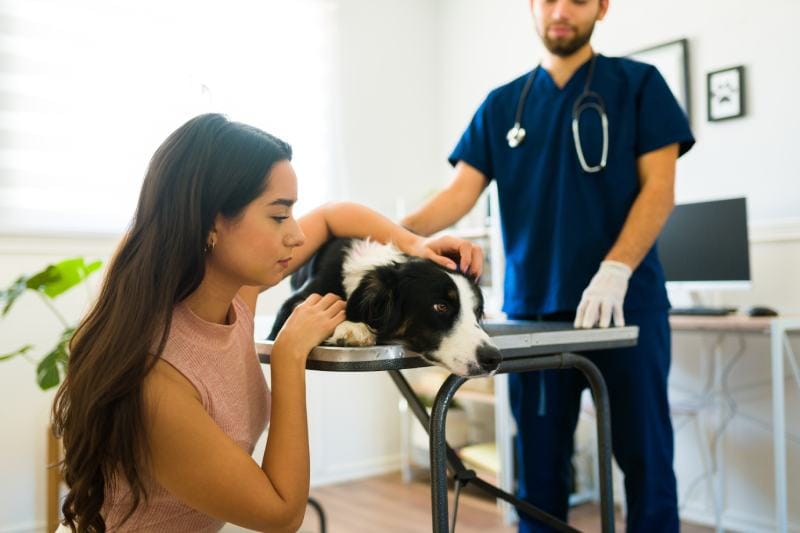
Fat
There’s a ton of fat in pork rinds, too, mostly from the oil used for deep frying. Not only can the fat content in this snack lead to obesity in your dog if they eat too many (and obesity can lead to problems like heart disease), but it can also increase your pup’s chances of pancreatitis. Pancreatitis can be severe and even fatal in some cases, so it’s something you want to avoid at all costs.
If you find out that your dog has gotten into a bag of pork rinds and see any of the following signs, you should get your pet to the vet as soon as you can.
- Painful abdomen
- Vomiting
- Dehydration
- Lethargy
Seasonings and Additives
Pork rinds can come in several flavors, and some could be toxic to your dog. Spicy or hot-flavored pork rinds will have seasonings such as chilis that could harm your pet. Dogs should never eat spicy foods, as the capsaicin found in spicy-flavored seasonings can burn their mouths and throats.
That isn’t the only reason spicy foods should be avoided for your pup, though. Spicy flavored foods often also contain garlic or onion seasonings, which are toxic to canines. In fact, onions contain a toxin that can lead to deadly anemia in dogs.
And though flavors such as cinnamon and sugar might seem a safer bet, they aren’t. Flavors like this one contain sugar, and too much sugar in your pup’s diet can result in health problems like diabetes and obesity.
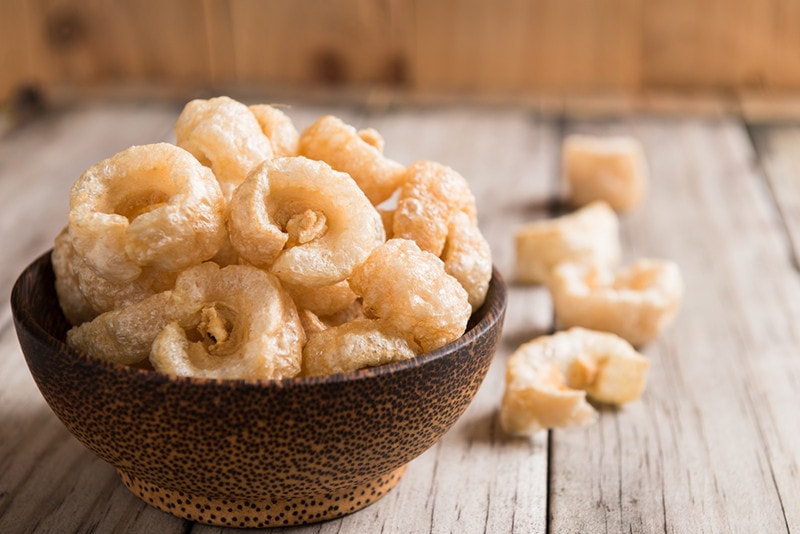
Pork Rind Alternatives for Your Pup
There are so many products available when it comes to dog treats that it isn’t too difficult to find a delicious treat for your pet that is awfully close to pork rinds (but dog-friendly). You could try dehydrated pork hearts or dehydrated pork thins. Or any of the other plentiful dehydrated pork products on the market! Whichever treat you pick out will surely delight your dog and will be eons healthier for them (though treats should still only be given in moderation!)
 Final Thoughts
Final Thoughts
Pork rinds are not a healthy snack for our canine companions. If your pet sneaks their way into a bag of pork rinds and just has a bite or two, they should be fine. However, if your dog manages to eat an entire bag, they could end up with health issues like pancreatitis or salt poisoning, so keep a close eye on them!
Instead of giving your dog pork rinds, reach for a healthier dog-friendly alternative in the form of dehydrated pork treats.
Featured Image Credit to: Left (Dog) Pexels, Pixabay; Right (Pork Rind) noktao, Pixabay


